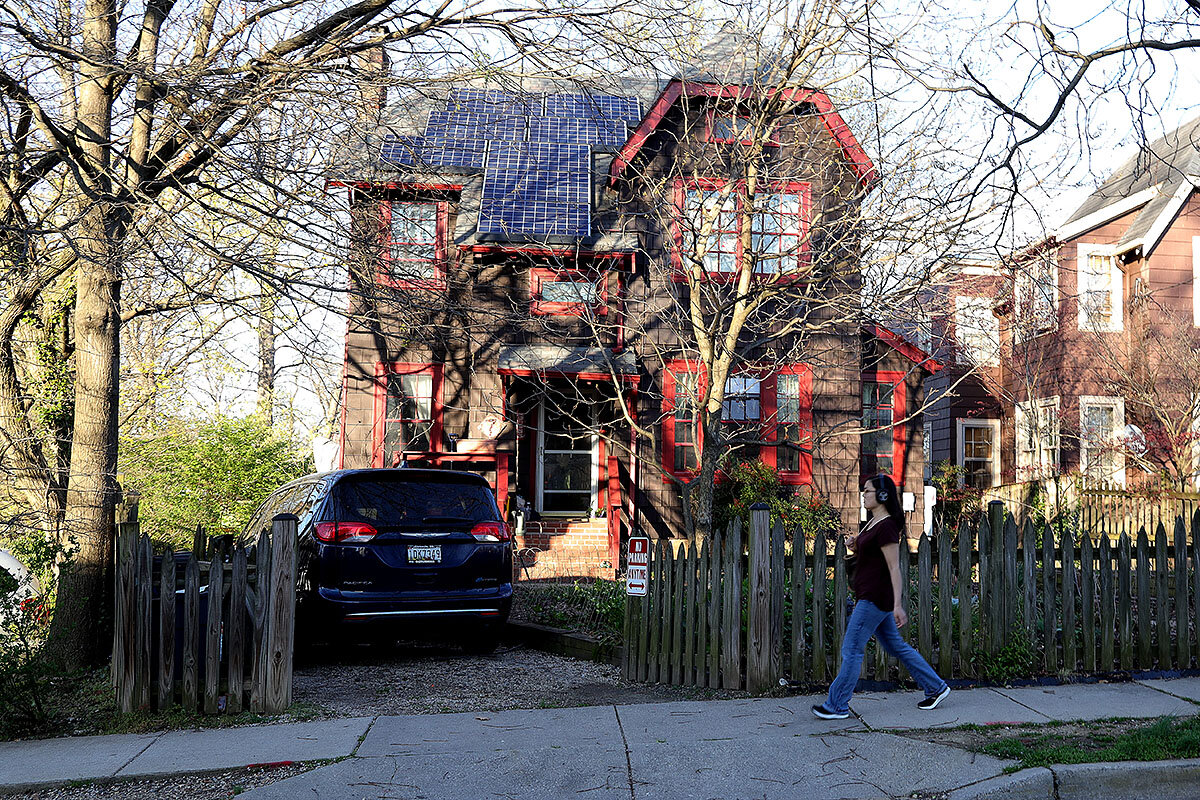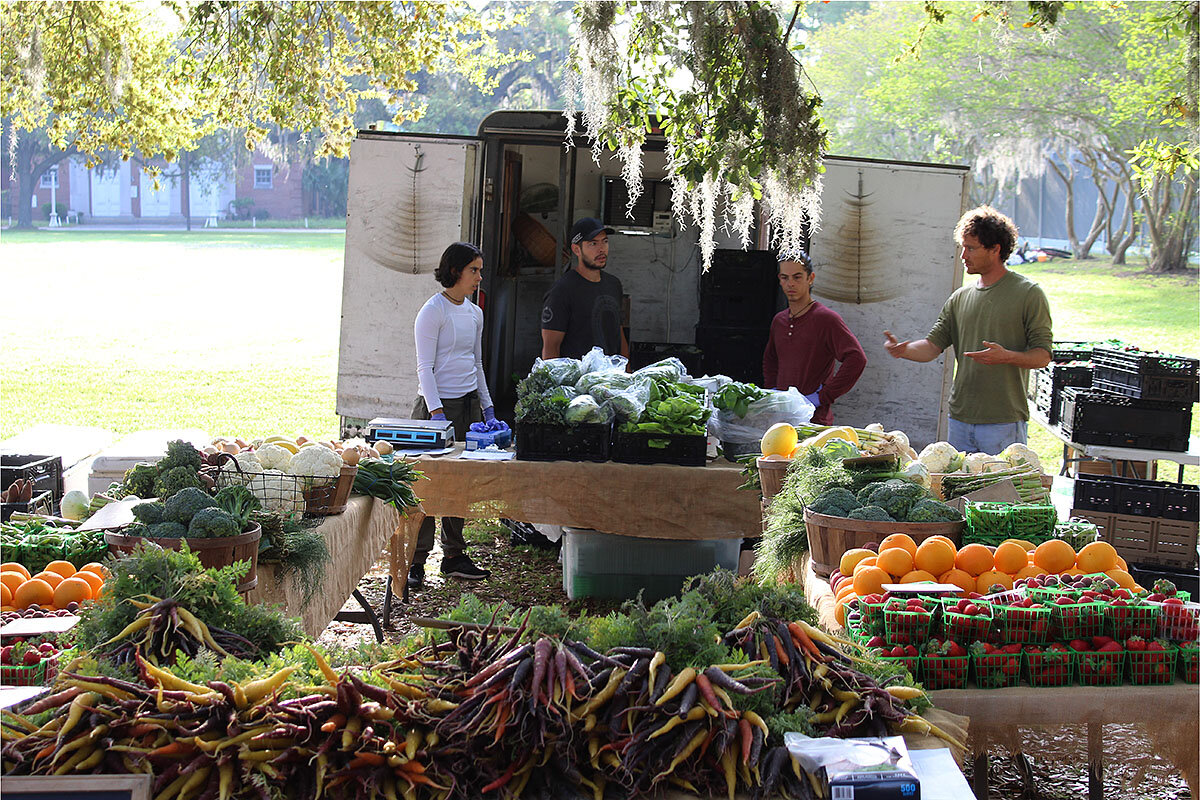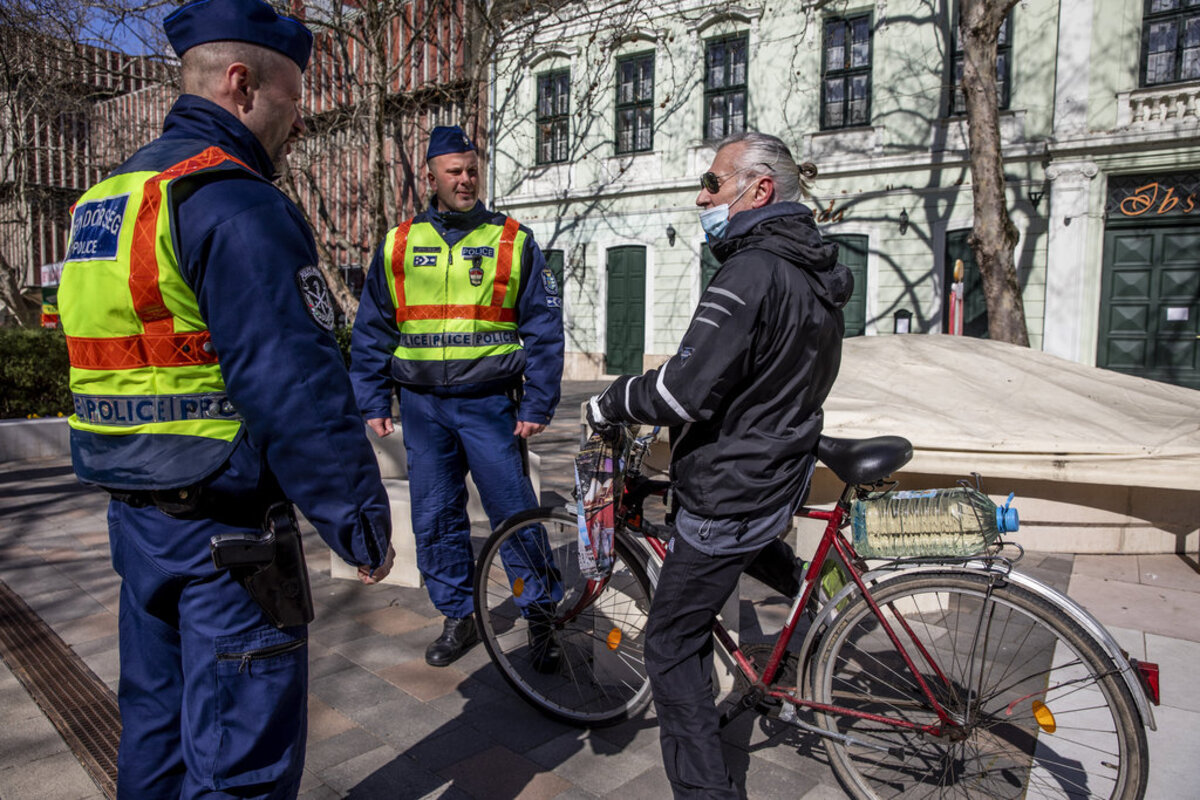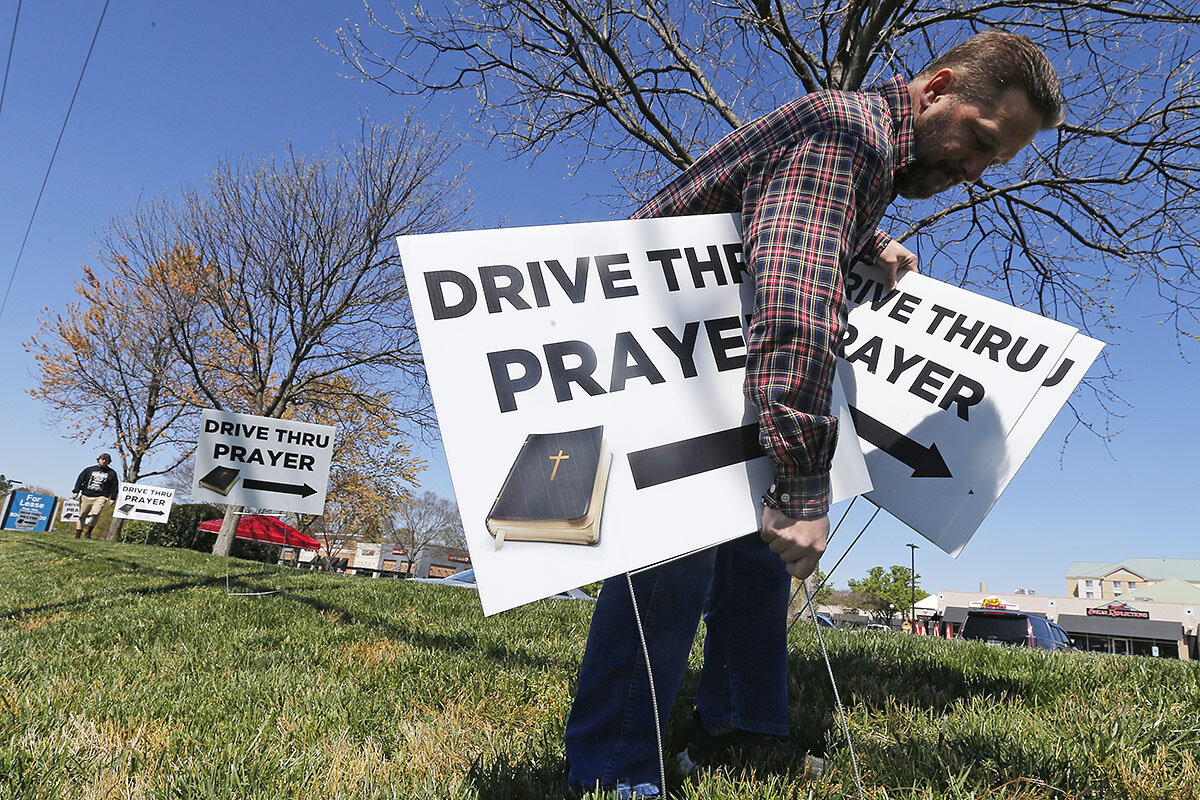How does one best convey information during a public health crisis? That’s a question media outlets are grappling with as they cover the president’s daily briefings, which tend to mix valuable information with inaccurate assertions.
Monitor Daily Podcast
- Follow us:
- Apple Podcasts
- Spotify
- RSS Feed
- Download
 Yvonne Zipp
Yvonne Zipp
Today’s stories explore presidential messaging, efforts to shelter California’s homeless residents, a bold climate proposal, a movement in limbo, and a Monitor film critic’s picks for escapist flicks. But first, a tale of a new connection made in isolation.
When Billy Collins read the Monitor’s story about New York shut-in Carmella Parry and Poems on Wheels, he says he was stirred by her joy-filled enthusiasm for the poems she received with her delivered meals.
The former U.S. poet laureate sent Ms. Parry a copy of his book “The Rain in Portugal.” “I just thought a book of poems might be a nice surprise for Carmella,” Mr. Collins told the Monitor’s Harry Bruinius, who wrote about Ms. Parry. “I mean, the entire city is locked down. That image that we have of the elderly living in apartments in New York, and just the kind of loneliness of so many of them – she’s kind of had her own locked down, shelter-in-place life, a shelter within this larger viral shelter now.”
Ms. Parry, at 94, has lived in the same fourth-floor walk-up for 70 years. Her sisters live nearby but are also homebound. They talk every day by phone, and Ms. Parry sends them cards with lines she composes.
Mr. Collins included a note wishing her the best. “She’s become kind of a paradigm of what’s happening to a lot of us that are confined now.”
He notes how Wordsworth once hoped personal lives would be marked by “little, nameless, unremembered acts of kindness and of love.”
“The ‘unremembered’ ingredient is the key,” says the author of “The Lanyard.” “The idea is to forget your good deeds, and that is done when your kind acts come so naturally you don’t remember them.”
A quick note before moving onto today’s stories: Be sure to check out Laurent Belsie’s story from yesterday on the newly unemployed. The story has been updated to reflect the latest unemployment figures released today.










